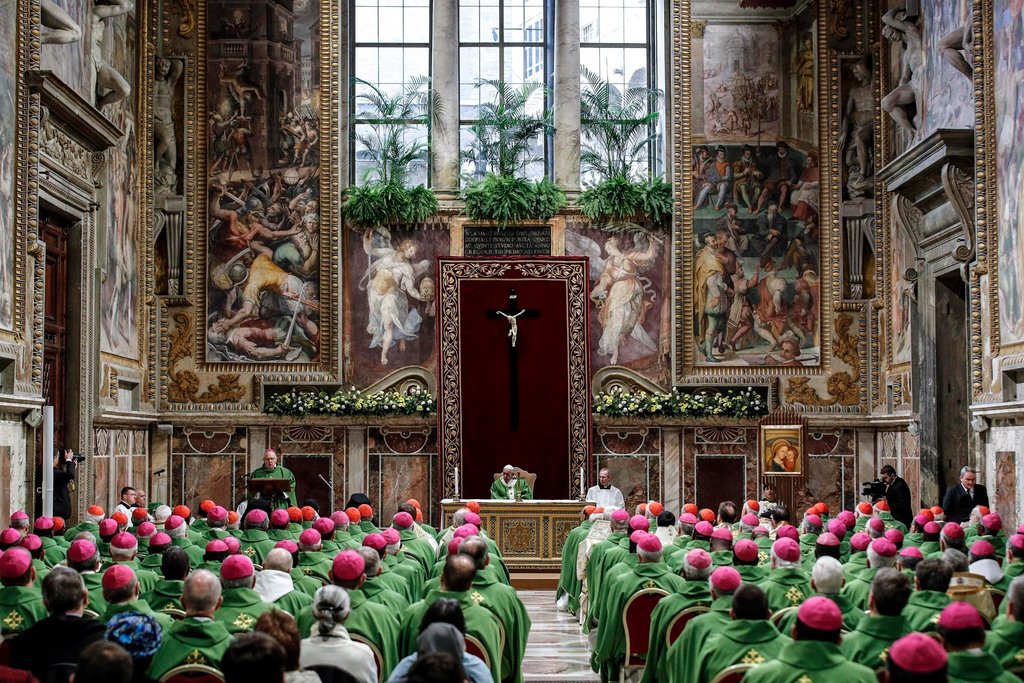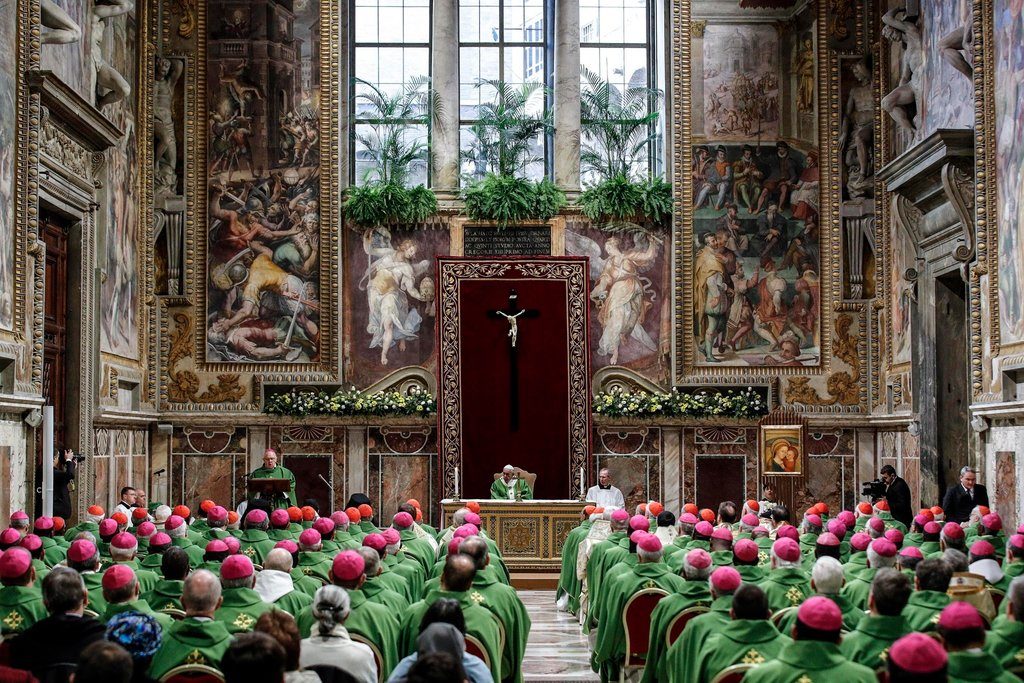Pink hats at the Vatican

This is the insight of Margaret McLaughlin, looking at the photos of the last day of the summit on sex abuse. All those pink hats on the bishops! We are reminded, of course, of all the pink hats worn around the world as women lift their voices and hearts during the now-annual marches in January.

Many witnessed outside the Vatican during the summit. Every news media outlet in my purview covered them intensively: the story was as much about the outsiders who spoke to the bishops as about the prelates inside. In her gloomy review of the meeting,
Mary Hunt summarizes the talks of the three women presenters. Would they have been invited if Voices of Faith had not drawn the attention it did last year? I am especially impressed with Valentina Alazraki , the Mexican journalist, who asks the bishops if the media are allies or enemies. That is the question. She continues:
The faithful do not forgive the lack of transparency, because it is a new
assault on the victims. Those who fail to inform encourage a climate of suspicion and incite anger and hatred against the institution.
I hope Alazraki’s address reaches the bishops because she places her call for honest communication in the context of motherhood, a trope that is used too often by those who are not mothers. Too often it’s a sentimental appeal that reinforces the pedestal syndrome: elevated but irrelevant. I hope Alazraki wipes that out of the bishops’ vocabulary.
Much has to change. This will give you an indication of how bad things actually are. Cardinal Cupich of Chicago and Archbishop Scicluna, two of the organizers of the meeting, told Josh McElwee of NCR that they support the Vatican making public the reason a bishop is removed. The procedure now is merely to announce that he’s gone. Are they still accepting secrecy until the last minute for bishops?
Cupich continues to promote his plan of metropolitan accountability. This has “ecclesiological roots,” as McElwee gracefully reports; what that really means is that decision-making remains in the hierarchy. While Cupich stresses that lay people will be involved at every step, it’s clear that, like your parish council, it’s advisory. Is that OK? Things have been better since the Dallas charter in 2002, but that allowed American bishops to opt in or not. Cupich’s plan would close that loophole and require the same procedures and transparency for all dioceses.
Both prelates tell McElwee that they want an end to the clerical culture. Do you remember how the Vatican reacted with fear and trembling when the USCCB was going to discuss new procedures about sex abuse last November? They insisted that any plans the Americans developed were premature. I think that they were afraid that non-canonical lay involvement would be included, as the lay head of the current USCCB advisory board continues to propose.
They want to have their clericalism and not have it, too.
Does it surprise those of you here in America and probably in Australia and in a few other places that we are ahead of the Vatican? The real purpose of this summit, in addition to protecting the chain of command, was to bring along those in countries where abuse exists and the church leadership is NOT communicating about it, NOT protecting the victims, NOT removing the perpetrators. Did they learn what they must do? Time will tell.
Meanwhile, here we realize that we must rely on the secular authorities to do the work of the church – thank you, Marci Hamilton for your many interviews this week. I love this one because it addresses the church
issues as well as the state ones, but you may have seen or heard Hamilton on RadioTimes with Marty Moss Coane, All In with Chris Hayes, and other media.
Finally, will no one ever again blame gay priests for the sex abuse crisis? Frank DeBernardo reported from Rome throughout the summit,
and gives you all the arguments you need to dispel this canard. His last report broadens the context, and quotes the address of Cardinal Rubén Salazar Gómez of Colombia on the first day of the summit:
A brief analysis of what has happened shows us that it is not only a matter of sexual deviations or pathologies in the abusers, but that there is a deeper root too. This is the distortion of the meaning of ministry, which converts it into a means to impose force, to violate the conscience and the bodies of the weakest. This has a name: clericalism.

In evaluating the summit, it’s easy to say it’s just words, and that it’s actions that matter. That’s true. But it’s also true that words matter. Will the speakers be able to ignore what they said? Will the listeners be able to ignore what they heard? I am encouraged by the impact of the January pink hats around the world; women changed the narrative. Similarly, naming the sin of clericalism again and again with bishop leaders who have succeeded within that system must make them examine what they do every day. Will they think of the meaning of ministry in a new way?
We have to hope so, and that the pink hats converge to think of women in ministry.

2 Responses
Clericalism is one of the symptoms. Patriarchal gender ideology is the root cause.
http://pelicanweb.org/03.19.Page24.GENCOM.jpg
Nice to quote Marge, and also great that they found a pink hat photo. Are pink hats for bishops now, and red for cardinals??